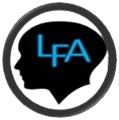Introduction
Many learners find traditional education methods inflexible and often struggle to meet their individual needs and goals. The one-size-fits-all approach can leave some learners feeling disengaged and unmotivated. Personalized learning paths in microlearning offer a solution by catering to individual goals and learning styles for maximum impact.
Microlearning breaks down complex topics into manageable, bite-sized chunks that can be easily integrated into daily routines. By tailoring these learning paths to fit personal preferences and objectives, learners can achieve better engagement, retention, and overall success. This article explores the benefits of personalized microlearning and how it can be effectively implemented to cater to diverse learning needs.
Understanding Personalized Learning Paths
Personalized learning paths are designed to meet the unique needs of each learner. They consider individual learning styles, interests, and goals to create a customized educational experience. In microlearning, these paths involve curating specific modules, lessons, or activities that align with the learner’s objectives and preferred learning methods.
To develop a personalized learning path, start by identifying your learning goals. What skills or knowledge do you want to acquire? Once you have a clear objective, assess your learning style. Do you prefer visual aids, interactive activities, or reading materials? Understanding these preferences will help in selecting the right microlearning resources.
Personalization also involves setting a flexible pace. Microlearning allows learners to progress at their own speed, making it easier to absorb and retain information. By tailoring the learning path to your individual pace, you can avoid feeling overwhelmed and stay motivated throughout the learning journey. This customized approach not only enhances learning efficiency but also makes the process more enjoyable and relevant to your personal and professional development.
The Role of Technology in Microlearning
Technology plays a crucial role in facilitating personalized microlearning. Various digital platforms and tools are available to help create and deliver tailored learning experiences. These platforms often use algorithms and data analytics to recommend content based on the learner’s progress, preferences, and performance.
For example, learning management systems (LMS) can track your progress and suggest relevant modules or activities to help you achieve your goals. Mobile apps designed for microlearning offer flexibility and convenience, allowing you to learn on-the-go. These apps often include features such as gamification, interactive quizzes, and multimedia content, which can enhance engagement and cater to different learning styles.
Another technological advancement aiding personalized microlearning is adaptive learning technology. This technology adjusts the difficulty level and type of content based on the learner’s performance in real-time. By continuously analyzing the learner’s interactions and responses, adaptive learning systems can provide a customized learning path that evolves with the learner’s needs, ensuring a more effective and personalized educational experience.
Benefits of Tailored Microlearning
Tailored microlearning offers numerous benefits that enhance the overall learning experience. One of the primary advantages is increased engagement. When learning materials are relevant and aligned with individual interests and goals, learners are more likely to stay motivated and engaged. This relevance helps to maintain interest and promotes a deeper connection with the content.
Another significant benefit is improved retention. Microlearning’s bite-sized format, combined with personalized content, makes it easier for learners to absorb and retain information. Short, focused modules allow for better concentration and understanding, reducing cognitive overload and making it simpler to recall information when needed.
Furthermore, personalized microlearning allows for greater flexibility. Learners can choose when and where to engage with the content, fitting learning into their schedules without feeling pressured by rigid timelines. This flexibility supports a more balanced approach to learning, allowing individuals to integrate education seamlessly into their daily lives and responsibilities.
Implementing Personalized Microlearning
To successfully implement personalized microlearning, start with a thorough assessment of the learner’s needs and preferences. This involves understanding their goals, identifying their preferred learning styles, and recognizing any specific challenges they face. Gathering this information can help in designing a customized learning path that effectively addresses individual requirements.
Next, select the appropriate tools and platforms. Utilize digital learning management systems and mobile apps that offer personalization features. Look for platforms that provide analytics and tracking capabilities to monitor progress and adjust the learning path as needed. Adaptive learning technologies can also be beneficial in creating dynamic and responsive learning experiences.
Incorporate various types of content to cater to different learning styles. This might include videos, infographics, interactive quizzes, and reading materials. Providing a mix of content types ensures that learners stay engaged and can interact with the material in ways that best suit their preferences.
Regular feedback and assessments are crucial for maintaining the effectiveness of personalized microlearning. Encourage learners to provide feedback on the content and their progress, and use this information to make necessary adjustments. Continuous improvement ensures that the learning path remains relevant and effective, supporting the learner’s ongoing development and success.
Final Thoughts
Personalized learning paths in microlearning represent a significant shift towards more flexible, engaging, and effective educational experiences. By catering to individual goals and learning styles, personalized microlearning maximizes impact, enhances retention, and fosters a more profound connection with the material. This approach not only supports individual growth but also aligns with the evolving demands of modern learners seeking convenience and relevance in their education.
Embracing personalized microlearning involves understanding the learner’s needs, leveraging technology, and continuously adapting the learning path. By doing so, educators and organizations can create tailored educational experiences that empower learners to achieve their objectives efficiently and enjoyably. This tailored approach transforms the learning process into a more inclusive, adaptive, and impactful journey.
As you explore personalized microlearning, remember that the key to success lies in flexibility, relevance, and engagement. Tailor your learning path to your unique needs and preferences, and embrace the tools and strategies that best support your goals. With personalized microlearning, you can unlock your full potential and achieve meaningful and lasting learning outcomes.

